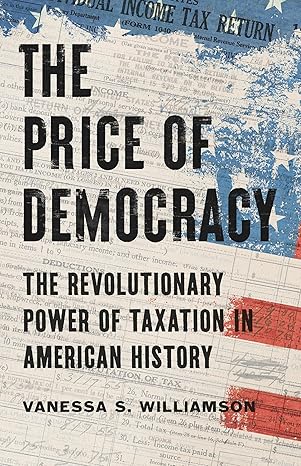One of the more noteworthy financial developments in developing countries over the past decade is the enormous growth of FDI: from $36 billion annually in 1991 to $173 billion in 1997, according to the World Bank’s 2001 Global Development Report. Although the growth in FDI flows has cooled off somewhat after the Asian, Russian, and Brazilian financial crises of 1997-98, they remained in 2000 at an estimated $178 billion, which is not only higher than before these crises but well above the level at the beginning of the decade.
Given the importance of finance to economic growth, it is natural to ask how important FDI has become in that particular sector in emerging market countries, what benefits and costs have been associated with it, and what changes in policy toward foreign financial firms would be in the economic interests of developing countries in the years ahead. These were the questions posed at the third annual conference on emerging markets finance conducted by the World Bank, the International Monetary Fund (IMF), and the Brookings Institution on April 19-21 in New York and attended by 170 financial experts and policymakers from around the world. This report summarizes some of the key findings of the papers presented at the conference.
Among other things, the papers confirm the increasing presence of foreign firms in financial sectors in key parts of the developing world, although Asia and Africa still lag significantly behind other emerging markets in this respect. The papers also document the important benefits foreign firms bring to the markets they enter: added investment, cutting edge technologies and managerial practices (especially risk management), and because they tend to be more diversified than local institutions, more financial stability. At the same time, the globalization of finance raises new policy issues that must be addressed, particularly the coordination of regulation and supervision across national borders.
On balance, however, foreign financial institutions provide net benefits to the countries in which they invest. For this reason alone, it is in the interest of countries that now restrict foreign entry in some form to drop those limitations, whether unilaterally or through multilateral negotiations.
How Important Is Financial Sector FDI?
Donald Mathieson and Jorge Roldòs of the IMF document that entry by foreign firms into the financial sectors of emerging markets increased significantly during the 1990s, especially in banking. In Central Europe, the foreign bank share rose from just 8 percent in 1994 to 56 percent in 1999. A similar trend occurred in Latin America, where by the end of the decade, foreign banks accounted for nearly half or more of the banking systems of several countries (Argentina, Chile, and Venezuela). Foreign bank penetration remains far lower, however, in Africa and Asia, although even in Asia, the foreign bank share doubled from 1994 to 1999 (from 6.7 percent to 13.2 percent).
What accounts for these increases? From source countries, mainly in the developed world, banks largely in search of higher profits have pushed outward into emerging markets. Eric Rosengren of the Federal Reserve Bank of Boston adds another reason: foreign banks have followed their corporate customers who have opened foreign operations. But banks cannot expand abroad unless destination countries let them in, which, in fact, many emerging market governments have done. Mathieson and Roldòs report that since the early 1990s, there has been a sea change in attitudes toward foreign banks and other financial firms in much of the developing world that has arisen out of periodic financial crises, or in the case of Eastern Europe, because new governments learned that formerly state-owned banks effectively were bankrupt. Foreign banks have been welcomed to help reduce the costs of resolving these financial problems.
For the most part, foreign banks have made the markets they have entered more competitive and have enhanced their efficiency. The results are reflected in lower operating costs and smaller margins between interest rates on loans and deposits, not just among the foreign banks but among domestic banks as well. Mathieson and Roldòs do not believe the verdict is as clear, at least not yet, as to whether foreign banks have contributed to more stability. In certain cases, foreign banks have pulled out in times of trouble, and in others they have remained. Nor do the authors find unequivocal evidence that foreign banks have reduced market volatility or increased the availability of credit to local borrowers. In his comments on these findings, Rosengren took a more optimistic view, noting that most retail foreign banks have not pulled back from emerging markets hit by financial crisis, and where they have, it has been due more to problems in their home countries (especially Japan).
Foreign banks have not been the only financial firms to wade into emerging markets in recent years. Harold Skipper of Georgia State University documents a similar, albeit less extensive trend of entry by foreign insurers. Skipper explains why insurance is important to economic development—it spreads the cost of risk, promotes economic stability for both families and firms, and mobilizes savings. Nonetheless, insurance in emerging markets still remains less well developed than banking, especially in property-casualty lines, although life insurance is significant and rapidly growing in Southeast Asia, South Africa, and other selected countries where savings rates are high and public pension systems are weak or non-existent. In several Asian countries, foreign insurers now account for about half of the life market, and a bit less of property-casualty, despite various non-institutional and cultural barriers to foreign firms.
Skipper reports that as with foreign bank entry, foreign insurers tend to have stimulated improvements in productivity in the markets they have entered. Still, many emerging markets still maintain some form of restrictions against foreign insurers, with only four countries having committed to “full liberalization” under the General Agreement on Trade in Services (GATS) implemented as part of the Uruguay Round trade agreement of 1995.
What do Foreign Financial Institutions do in Emerging Markets?
In designing policy on the entry of foreign financial institutions, it is important to understand what lines of business they tend to emphasize. Michael Pomerleano of the World Bank and George Vojta of the Financial Services Forum examine the behavior of the largest multinational or global banks. These institutions are capable of offering cutting edge wholesale and retail services, generally at lower cost than purely domestic banks. Allowing such institutions to enter a market brings much greater competitive pressure on local banks to consolidate and reach a scale at which they can effectively compete.
At the same time, as Thomas Fischer of Deutsche Bank also confirms, global banks tend to focus their attention on the largest corporate customers that have the greatest need for their sophisticated services (including foreign exchange and risk management, derivatives trading, underwriting of securities, and cross-border mergers and acquisitions). Fears by local banks that the global banks will run them out of business in lending to individuals and small and medium-size enterprises (SMEs) have been unfounded. As a result, global banks tend to complement—and not replace—the banking services of the locally-oriented institutions. Moreover, for countries that have experienced banking problems, the foreign institutions help in the process of restructuring, either through outright purchases or joint ventures and alliances.
Ranjit Singh of the Securities Commission in Malaysia presented the results of a similar study of foreign entry into the securities business. Among the findings: that developing countries have become more welcoming over time of foreign firms in this business as they see the need to finance their non-financial enterprises and in response to pressure to liberalize under the GATS. Singh also reported the preliminary results of a survey among respondents in 17 emerging markets, of which nine (including nearly all Asian countries in the sample) explicitly allow foreign majority ownership of domestic securities firms, while seven allow 100 percent ownership. The survey broadly revealed that foreign firms either did not “run” from—and in some cases actually increased—their participation in local markets that had suffered financial crises. As for securities exchanges, in four of the 17 markets at least one of the exchanges has been demutualized—a trend now evident among securities exchanges in developed countries, as documented by Benn Steil of the Council on Foreign Relations in his paper—and another four more are looking to do the same soon. The degree of foreign participation allowed in the new “corporatized” exchanges varies, however.
A panel of experts from financial institutions provided their own perspectives on foreign participation in the financial sectors of emerging markets. Cesare Calari of the International Finance Corporation (IFC) described the broad nature of the IFC’s investments in private firms in emerging markets, half of which are in domestic banks, and the rest concentrated in private equity, venture funds, asset-based financing, and other related activities. The IFC views financial institutions as important to facilitating the development of a middle class in emerging markets. Although Latin America is the IFC’s largest region, the Corporation views Africa as a potentially large market in the future, as liberalization and privatization continue in that part of the world.
Thomas Fischer outlined Deutsche Bank’s emerging markets strategy, which historically has focused on Asia. Deutsche Bank established a presence there in order to follow its corporate customers, and plans to continue that function.
Paulo Leme of Goldman Sachs described how although his investment bank has become global in its operations—non-U.S. activities now account for more than half of the firm’s revenue—it has taken advantage of technology to avoid having to establish a major local presence in most emerging markets. Nonetheless, Goldman has become a leading underwriter of sovereign and corporate bonds issued from emerging markets.
Larry Mellinger from AIG noted that his company—now one of the world’s leading insurers—was founded in Shanghai and has continued to maintain its strong Asian roots. In addition to its global insurance activities, the company has recently sponsored more than twenty investment funds with assets in emerging markets. Unlike some other fund sponsors, AIG provides roughly 10 percent of the capital of each of the funds it sponsors, looking to exit their investments (like the IFC) through initial public offerings and sales either to strategic buyers or to local managers.
Regional Case Studies
Three papers at the conference considered experiences of countries and regions that had recently welcomed significant investment in their financial sectors from foreign firms. Donald Simonson of the University of New Mexico discussed how the Czech Republic, in privatizing its formerly state-owned banks in the early 1990s, initially restricted share purchases by large foreign banks, hoping that Czech ownership would evolve. Foreign interest was also deterred by the absence of effective legal support for creditors, not just in the laws themselves but in weak judicial administration. By the end of the decade, however, the main Czech banks were paralyzed by large holdings of non-performing loans and so the government turned to foreign banks to mount a rescue. Today, the Czech banking sector is significantly stronger and more competitive as a result.
A team of researchers from the Federal Reserve Bank of New York—Jennifer Crystal, B. Gerald Dages, and Linda Goldberg—found similar positive results from the rapid increase in foreign ownership of banks in Latin America during the 1990s. Broadly, they found that local banks that were acquired by foreign owners became financially stronger relative to their domestic counterparts. Their in-depth study of Argentina, Chile, and Colombia found that foreign banks in these countries demonstrated higher and more stable average loan growth, higher risk-based capital ratios, but surprisingly only comparable or weaker profitability than domestic banks. This latter finding, coupled with the fact that foreign banks had higher loan loss provisions than domestic competitors during the period studied, suggested to the authors that foreign banks did not “cherry pick” their loan customers, but instead took more aggressive actions to deal with bad loans when they deteriorated. On average, the foreign institutions also did not “cut and run” when certain Latin American countries ran into financial difficulties during the decade.
Nicholas Lardy of the Brookings Institution focused his paper on China, where until recently, foreign financial firms of all types have been subject to significant restrictions. Nonetheless, over 100 foreign banks with offices in China are poised to expand as China meets the conditions to which it agreed in order to become a member of the World Trade Organization (WTO). Some foreign firms also may be in a position to help China reduce the cost of dealing with the large volume of non-performing loans now held by its state-owned banks (or transferred to asset management companies for resale). Still, Lardy expects that foreign bank expansion will evolve slowly in China for at least two reasons. One is that the government continues to limit the ratio of a foreign bank’s domestic to foreign currency deposits. Even when this restriction is fully lifted, Lardy points to a shortage of creditworthy (by Western standards) domestic borrowers. Foreign insurance companies are also likely to enter China relatively slowly because, unlike the banking sector, where all ownership restrictions eventually will be lifted as part of China’s planned accession to the WTO, foreign insurers will continue to be limited to no more than a majority ownership interest. Tighter restrictions will continue in the securities and fund management industries.
Future Policies Toward Financial Sector FDI
Consistent with several other papers presented at the conference, Edward Graham of the Institute for International Economics argued that the evidence points to the overwhelming economic benefits of allowing foreign firms to engage in financial activities. More controversially, Graham claimed that this should happen even in countries experiencing financial problems, despite fears that foreign institutions could then destroy weak domestic competitors. If these fears constitute a significant political constraint, Graham suggested that governments could condition foreign entry—during some transition period—on acquiring weak or insolvent domestic institutions. In addition, countries fearing domination by foreign firms from one particular country (where financial difficulties may cause them to pull back from activities abroad) could seek diversification of source country owners to address this concern.
The key point, however, is that any costs of lifting foreign ownership restrictions in countries with significant financial problems are likely to be far outweighed by the costs of keeping them in place, while simultaneously penalizing potentially creditworthy borrowers who might otherwise not be able to obtain loans from troubled banks or other financial institutions. Countries that have strong domestic financial systems but continue to restrict foreign entry have no good economic excuse for doing so, in Graham’s view.
One other area in which countries can and should move on their own, according to Benn Steil, is the development of securities exchanges. Given the large cost savings made possible by electronic networks, Steil advises emerging markets to abandon the traditional mutual exchange model—one which relies on floor broker-members to complete transactions on behalf of others—and to move instead to the vastly cheaper, privately owned electronic networks to facilitate securities trading.
The listing of securities—which in Steil’s view should be a competitive business open to non-exchanges subject to minimum government standards—should be separated from the trading infrastructure, which in light of extraordinary advances in information technology, can be contracted out. Often, the best contractors will be foreign. In addition, emerging market exchanges should not feel compelled to provide continuous trading. For lightly traded stocks where liquidity may be a problem, the solution lies in periodic auctions in which bids are cumulated and prices are set several times a day. Indeed, Steil notes that the Warsaw Stock Exchange started out with one call auction per week.
Much of the progress on liberalizing foreign restrictions has been in the context of multilateral negotiations, where the actions are reciprocal. The most recent example is the Financial Services Agreement (FSA) concluded in December 1997 under the auspices of the GATS. Pierre Sauvè of the OECD and Karsten Steinfatt of the Organization of American States surveyed the prospects for further reciprocal liberalization in light of the backlash against the WTO triggered in Seattle in 1999.
On the bright side, the authors point to the continued strong interest in further progress from the financial communities in developed countries. But there are a number of cautions. The commitments toward liberalization of ownership and activity restrictions in the financial sector under the FSA have been in effect for only two years, and thus it is not clear how interested developing countries are in making additional commitments so soon. Furthermore, the negotiating agenda ahead in the financial sector is a complicated one, involving such new issues as the applicability of existing restrictions to Internet-based finance, as well as how those restrictions can be rationalized in the new world of finance, where traditional barriers between different lines of business (banking, insurance, and securities) are becoming less relevant elsewhere in the world.
Sauvè and Steinfatt conclude the best chance for further reciprocal liberalization would be if financial companies in the industrialized countries persuade their governments to launch a new broad round of WTO negotiations that would afford ample opportunities for reciprocal liberalizations in financial and non-financial arenas. In the meantime, the authors view the gradual development of international standards for financial supervision as a useful way of locking in measures to maintain competition in financial markets.
However rapidly current restrictions on FDI may be removed, governments in both emerging markets and in developed economies that are home to many global financial institutions also face a new set of policy challenges associated with the increased globalization of finance. For example, Mathieson and Roldòs cite the need to maintain and implement antitrust policies to prevent undue concentration of their financial systems, especially where foreign firms are successful in driving out local competition. They and Rosengren also point to the need for all countries to improve cross-border coordination of financial supervision, regulation, and the sharing of confidential information. At the same time, however, as various authors at the conference pointed out, regulators in emerging markets can benefit from the risk-mitigation and other managerial skills that foreign financial institutions bring with them when they enter these markets. Graham added that strengthening domestic supervision is especially important for countries after a crisis where bank deposits have been legally or de facto protected against loss. Otherwise, such guarantees can lead to a significant “moral hazard,” encouraging imprudent lending behavior and thus lay the groundwork for future crises.
The Role of Financial Sector E-Commerce
Finally, the e-commerce revolution that is sweeping many developed countries is also making its presence felt among emerging market and nearly developed countries. Indeed, South Korea and Singapore are considerably ahead of much of the developed world in that large percentages of their populations now have high-speed access to the Internet. Mobile telephones, which increasingly will be used to access the Internet, also are rapidly penetrating parts of the developing world. But still, e-commerce in emerging markets is still generally far behind that of the developed world. Will this change?
Philip Turner of the Bank for International Settlements is optimistic that it will, albeit gradually in many emerging markets, which typically have a weaker telecommunications infrastructure than the developed world. In his comments on Turner’s paper, Thomas Glaessner of the World Bank suggested one way to address this problem: telecommunications authorities should prevent their incumbent telephone monopolies from refusing interconnection with other providers and from charging excessive rates for doing so.
Assuming these difficulties eventually are overcome, Turner argues that increased penetration of the Internet is inevitable because it promises substantial gains in efficiency. But as this happens, policymakers in both the developed and developing world will face new challenges. Among them: how to monitor operational risks of institutions that use the Internet; deciding which country’s law applies when bank transactions falter; and safeguarding financial systems from the increased involvement of non-financial firms in finance.
The Brookings Institution is committed to quality, independence, and impact.
We are supported by a diverse array of funders. In line with our values and policies, each Brookings publication represents the sole views of its author(s).







